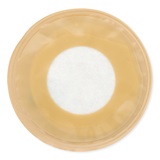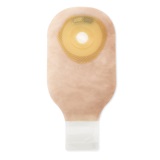Essential Facts About Your Colostomy
The more you know about your digestive system and your colostomy surgery, the better your frame of mind before and after the procedure. Learn the essential facts here.

Learn the basics about digestion and your colostomy.
If you are about to have, or have recently had colostomy surgery, you may have questions about your digestive system and your procedure. Below are a few fundamentals about how your body digests foods and liquids, and what happens during and after colostomy surgery.
Your gastrointestinal (GI) system
Here’s what happen when you chew your food and swallow it:
- It goes down your esophagus into your stomach
- Stomach acids and chemicals, called enzymes, break down the food
- The food becomes a liquid mixture
- The liquid food mixture passes from your stomach into your small intestine
The small intestine, which is about 20 feet long, is where most digestion takes place. Vitamins, minerals, proteins, fats, and carbohydrates are all absorbed into your body through your small intestine. Any food not absorbed in the small intestine goes into the large intestine as liquid waste or stool.
Your large intestine, also called the colon, is divided into four parts with different names: ascending, transverse, descending, and sigmoid. It’s about five to six feet long, and has two main purposes: absorb water from your stool, and store your stool until you have a bowel movement
What is a colostomy?
A colostomy is an opening into the colon through the abdomen created during surgery. This opening allows stool to bypass the diseased or damaged part of your colon. A colostomy may be created at almost any point on the colon. It may be temporary or permanent, depending on the medical reason for the surgery.
To create a colostomy, your surgeon brings part of your colon through the abdominal wall. This new opening on the abdomen is called a stoma. Two common types of colostomies are a transverse colostomy and a sigmoid colostomy, named for the location of the opening.
Four important points to remember:
- After a colostomy, bowel movements don’t pass through your anus, but through the stoma
- A stoma doesn’t have a sphincter muscle (the anus muscle that allows you to control bowel movements)
- This means that you no longer have voluntary control over bowel movements
- Instead, you will wear a pouch that collects stool in a sanitary way
Now that you know the basics about you’re the digestive system and colostomy surgery, explore what you need to know about ostomy pouching systems.



- 7 Shares
- 94 Recommended





 Call Us
Call Us  Email Us
Email Us  Join Us!
Join Us!  Sign Up
Sign Up 